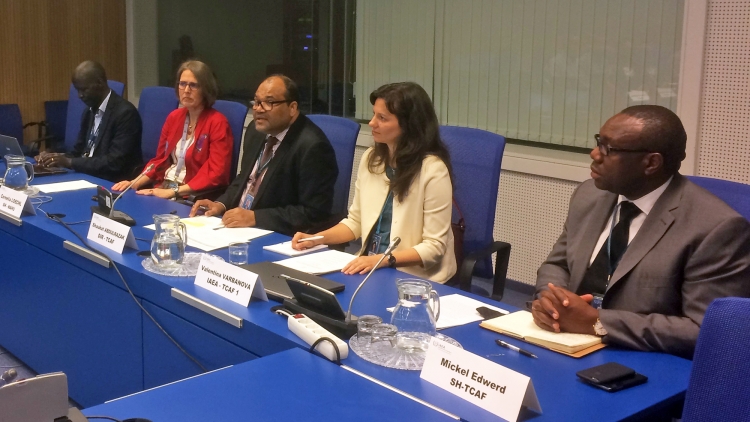A second coordination meeting for a regional IAEA technical cooperation project[1] that focuses on the use of nuclear techniques to assess the body composition of children previously affected by malnutrition took place in Vienna from 28 May to 1 June. The project, which began in 2016, aims to improve national programmes in eight countries in Africa to treat children with moderate and severe acute malnutrition through the assessment of body composition and a range of health outcomes such as body weight, height, handgrip strength, lipid profile, blood pressure, markers of inflammatory processes and physical activity levels in the context of the nutrition transition. Nutrition transition is characterised by altered dietary patterns and lifestyle changes linked to population growth, urbanization and globalization.
Opening the meeting, Shaukat Abdulrazak, Director of the Division for Africa, stressed the unfavourable malnutrition conditions in some African countries according to the United Nations Children's Fund (UNICEF), World Health Organization (WHO) and World Bank data, and urged the meeting participants to bear these figures in mind as motivation to maximize their efforts in contributing data that can be used to inform the design of interventions to address this problem during the final two years of the project. Mr Abdulrazak underscored the important role that the project could play in attracting concrete attention from international donors, and in rallying support from policy-makers to bring about real change – not only in individual countries, but on the continent as a whole.



